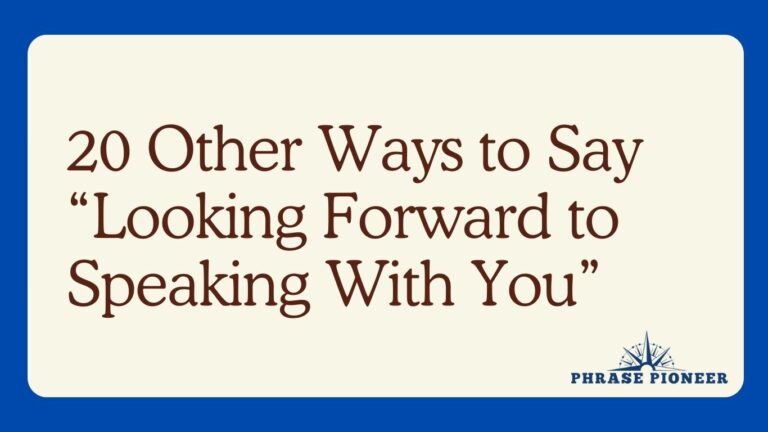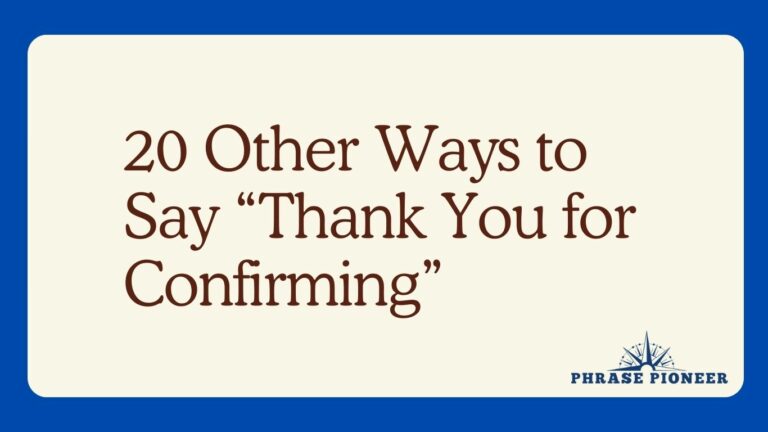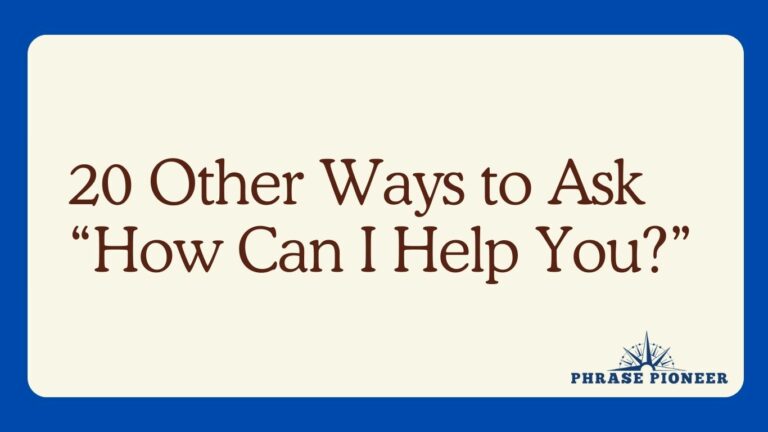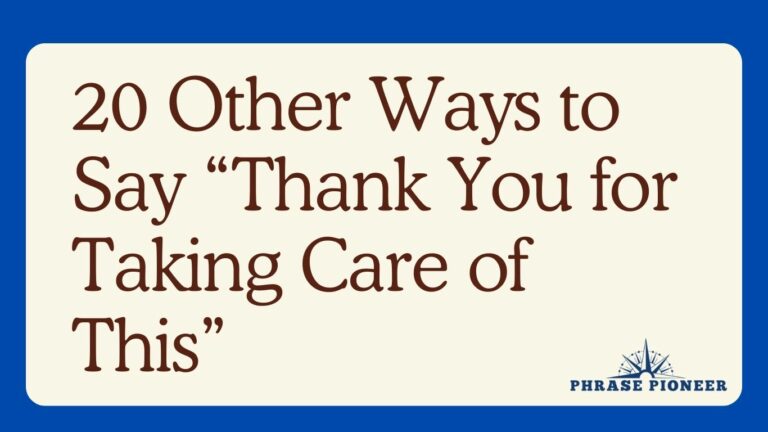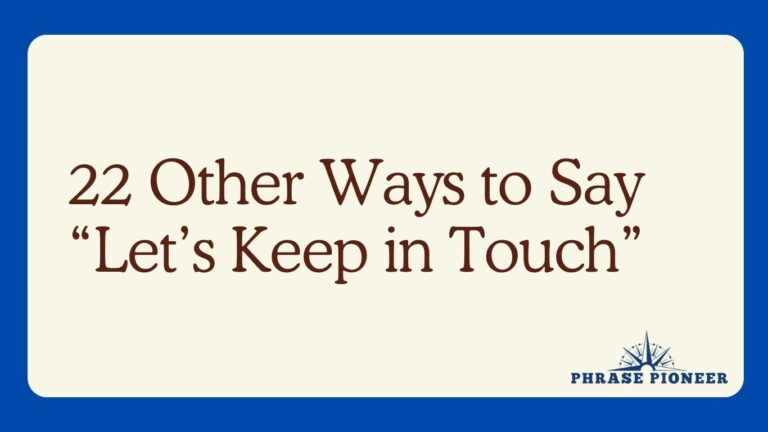23 Other Ways to Say “Who Is This?”
Inquiring about someone’s identity, especially in texts, emails, or unknown calls, requires a balance of politeness and directness. Different contexts call for varied levels of formality and warmth.
Here are 23 alternative ways to ask “Who is this?”, each followed by an example sentence and an explanation, catering to a range of situations from formal to casual and everything in between.
Formal and Professional
1. May I ask who’s calling, please?
- Example: “I’m sorry, I don’t recognize the number. May I ask who’s calling, please?“
- Explanation: Adds a layer of politeness to the request, suitable for professional contexts.
2. To whom am I speaking?
- Example: “I’ve just picked up the phone and I’m not sure of the caller. To whom am I speaking?“
- Explanation: This is similarly polite and formal, often used in professional conversations.
3. Could you kindly identify yourself?
- Example: “Before we proceed with the discussion, could you kindly identify yourself?“
- Explanation: This request is polite and formal, signaling respect towards the person you are addressing.
Semi-Formal
4. Who do I have the pleasure of speaking with?
- Example: “I apologize, but your name escaped me. Who do I have the pleasure of speaking with?“
- Explanation: This version is semi-formal, incorporating a pleasant demeanor while inquiring about the identity.
5. May I know your name, please?
- Example: “I see we’re scheduled for a meeting, but I didn’t catch your designation. May I know your name, please?“
- Explanation: A gentle request for the person’s name that maintains a semi-formal tone.
6. Would you mind telling me who’s on the line?
- Example: “I received a message from this number earlier today. Would you mind telling me who’s on the line?“
- Explanation: A polite and indirect method of asking for someone’s identity, suitable for a conversation that is not strictly formal.
Casual and Friendly
7. Who’s this, please?
- Example: “Hey there, I just saw your missed call. Who’s this, please?“
- Explanation: A straightforward approach that’s casual but still carries a polite “please”.
8. Hey, who am I chatting with?
- Example: “Got your message about the reunion. Hey, who am I chatting with?“
- Explanation: A very casual and relaxed way to ask someone’s name, fitting for informal texts or messages.
9. Sorry, I didn’t catch your name?
- Example: “We’ve been talking for a bit, but I realized I didn’t catch your name?“
- Explanation: Implies that the omission of the name was accidental, offering a soft and casual request for that information.
In Personal Messages or Emails
10. Excuse me, but have we met before?
- Example: “I received your friend request yesterday. Excuse me, but have we met before?“
- Explanation: A polite and indirect way to inquire about the identity of the person, suitable for unfamiliar interactions on social media or emails.
11. Could you help me place you?
- Example: “Your name sounds familiar, yet I can’t seem to remember. Could you help me place you?“
- Explanation: Indicates a vague recollection of the person and requests assistance in identifying them, maintaining a friendly tone.
12. Mind refreshing my memory with your name?
- Example: “We’ve exchanged a few texts, but my mind’s drawing a blank. Mind refreshing my memory with your name?“
- Explanation: Casual and suggests that you’re aware of at least some prior interaction, but need help recalling specifics.
Humorous and Light-hearted
13. Am I talking to someone famous here?
- Example: “Your number isn’t saved on my phone. Am I talking to someone famous here?“
- Explanation: Adds humor to the conversation, diffusing any potential awkwardness in asking for someone’s identity.
14. Should I know you from somewhere?
- Example: “You sound like you have interesting stories. Should I know you from somewhere?“
- Explanation: Light-hearted and suggests curiosity about the person’s identity without being too direct.
15. Is this a secret admirer?
- Example: “I received a lovely note but no name was attached. Is this a secret admirer?“
- Explanation: Playful and flirty, used when the context allows for a bit of teasing or in personal, non-professional relationships.
When Needing Clarity in Communication
16. Do we know each other?
- Example: “Your number isn’t familiar. Do we know each other?“
- Explanation: Direct yet neutral, seeking to establish if there’s any previous acquaintance.
17. Sorry, whose number is this?
- Example: “I found this number in my phone without a contact name. Sorry, whose number is this?“
- Explanation: Direct and to the point, appropriate when speaking over the phone or in a message.
18. I’m having a hard time placing you, can you help?
- Example: “Your face looks familiar, but I’m having a hard time placing you, can you help?“
- Explanation: Expresses a struggle in remembering the person and kindly requests their assistance in jogging your memory.
Expressing Genuine Confusion
19. I’m a bit lost; could you tell me who you are?
- Example: “I received several applications today, and I’m a bit lost; could you tell me who you are?“
- Explanation: A polite way to express confusion about the person’s identity, especially in situations with multiple interactions.
20. Your name isn’t ringing any bells; who is this?
- Example: “We were introduced at the conference last week, but your name isn’t ringing any bells; who is this?“
- Explanation: Signals that the person’s name doesn’t bring up any immediate memory, asking for clarification in a polite manner.
When You’re Completely Unaware
21. I’m sorry, but I’m not sure who you are
- Example: “You’ve given me detailed feedback, but I’m sorry, I’m not sure who you are.“
- Explanation: Straightforward, expressing that you don’t remember them. It’s apologetic, indicating no offense is meant.
22. Have we met before? Your name doesn’t sound familiar
- Example: “You mentioned we met at Jane’s party, but have we met before? Your name doesn’t sound familiar.“
- Explanation: Politely indicates that the name given does not recall any memories or associations.
23. Can you help jog my memory about how we know each other?
- Example: “I’m drawing a complete blank – can you help jog my memory about how we know each other?“
- Explanation: Openly admits a lack of recognition and asks the person to provide context or a reminder of previous interactions.
These alternate phrasings offer a spectrum of ways to ask for someone’s identity, allowing you to tailor your approach based on the context, your relationship with the person, and the tone you wish to convey. Whether in personal, professional, or unfamiliar scenarios, selecting the right phrasing can facilitate clear and polite communication.


